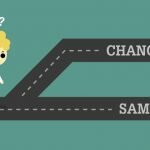It seems that everyone has a reason for why personas don’t work. For example, Intergage suggests many personas are outdated. Whereas InVision sees organizations using personas as an excuse not to speak to users. Nielsen Norman Group thinks teams create personas in silos and impose them on teams. And CMO says they’re not specific enough.
UX Collective says (in passing) that personal characteristics don’t imply behaviors. Their solution is to instead use the Jobs To Be Done framework. But I see another solution: create personas based on behaviors.
Or, as we call them at Mad*Pow, behavioral personas.
What are Behavioral Personas?
Perhaps unsurprisingly, behavioral personas are personas based on a users behaviors. This is different from most personas, which are based on demographics.
To quote Dana Ortegón and Priyama Barua:
Which persona gives you the most actionable information?
Option #1
A 40 year old attorney who’s married, lives in Portland, Maine and makes $80k a year.Dana Ortegón and Priyama Barua, MPACT
Option #2
A person who’s not detail-oriented, prefers a hands-off approach, delegates decisions to others, and is overwhelmed by complexity
In other words, NN Group, InVision, and the rest are right. Demographic personas do make a lot of assumptions. For example, they can cause product owners to assume a certain age implies technical illiteracy, when that’s just not true. Or they clump all “rural” audiences together, or all “female college students” in one group. When in reality, these demographics have limited impact on a person’s choices or needs.
How to Use Behavioral Personas
The beauty of behavioral personas is that they go beyond empathy. Yes, personas help build empathy. But that only works if people read the personas on a regular basis. So to create a valuable persona it needs to be:
- Useful for people to reference regularly
- Something people use for their work
- Updated on a regular basis
A demographic persona is a nice-to-have. But what do people need to reference for their projects? Typically, they need to double check what an end-user wants to do. For instance: their goals, barriers, or tendency to act in a certain way.
In other words, create a persona that calls out things like:
- a person’s likelihood to ask for help,
- their confidence in decision making, or
- their interest in learning new skills
How to Build a Behavioral Persona
Usability.gov suggests a persona should include on age, gender, work experience, motivations, etc. But as we’ve discussed, these aren’t things product owners and designers reference regularly.
A behavioral persona should include the things that help someone make choices. For example, the MPACT Persona Construction Toolkit focuses on persona elements such as:
- How does the persona approach receiving guidance?
- How trusting is the persona?
- What is the persona’s attitude toward decision-making?
These behaviors are things product owners and designers need to check on a regular basis. They’ll learn more from users in every usability test, and be able to update the personas, ensuring they stay up-to-date. And the attributes themselves are specific and useful for making design decisions.
Build Your Behavioral Personas
Are personas done for? Not likely. On the other hand, demographic personas are not serving your needs. It’s time to get started thinking about behaviors!


